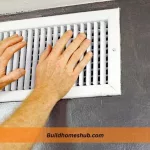Electric furnaces are a vital component in many homes, providing warmth and comfort, especially during the cold months. However, energy consumption can be a concern, particularly when usage skyrockets to 6000 kWh per month.
This figure may seem staggering at first glance, but it’s essential to understand that multiple factors contribute to this level of energy consumption. From the home’s size and insulation to the furnace’s efficiency and settings, various elements play a role in this significant energy usage.
This post will talk about the key reasons why an electric furnace might consume 6000 kWh per month.
Why Would an Electric Furnace Use 6000 KWh per Month?
An electric furnace might use 6000 kWh per month due to the energy required to raise the temperature in the space it heats to the desired level set on the thermostat. Other reasons include:
1. Size and Capacity of the Furnace
The energy consumption of an electric furnace is directly related to its size and heating capacity. If the furnace is designed to heat a large space or multiple rooms, it will naturally consume more energy. A high-capacity furnace operating at full power for prolonged periods can quickly add up to a significant amount of energy consumption.
2. Insulation and Building Construction
If the building or space where the electric furnace is used is not properly insulated, a lot of the heat generated by the furnace could be lost. Poor insulation allows heat to escape quickly, forcing the furnace to work harder and longer to maintain the desired temperature. This can dramatically increase energy consumption. Likewise, windows, doors, and other openings that are not sealed correctly can exacerbate this problem.
3. Inefficient or Outdated Technology
Older electric furnaces or models that lack modern energy-saving features might consume more energy. The efficiency of a furnace is often measured by its AFUE (Annual Fuel Utilization Efficiency) rating. A low AFUE rating means that a larger percentage of the electrical energy is wasted and not converted into usable heat. Upgrading to a newer, more efficient model could reduce energy consumption significantly.
4. Thermostat Settings and Usage Patterns
The way the furnace is used and the thermostat settings can also influence energy consumption. If the thermostat is set to a very high temperature, or if the furnace is used continuously without any breaks, energy consumption can be very high. Smart thermostats that can learn usage patterns and adjust accordingly might help in reducing unnecessary energy usage.
5. Lack of Regular Maintenance
Regular maintenance of an electric furnace is essential for its efficient operation. Dirty or clogged filters, worn-out parts, and other issues arising from lack of maintenance can cause the furnace to work harder to produce the same amount of heat, consuming more energy. Regular check-ups and timely repairs can keep the system running optimally and prevent excessive energy consumption.
6. Incorrect Sizing for the Space
If the electric furnace is either too large or too small for the space it is heating, it can lead to inefficiencies. An oversized furnace may cycle on and off frequently, leading to more energy consumption. Conversely, an undersized furnace might run continuously, struggling to maintain the desired temperature, and consume more energy.
7. External Factors and Climate
The external climate and weather conditions can significantly impact the furnace’s energy consumption. In extremely cold regions, the furnace must work harder to maintain indoor temperatures, leading to higher energy consumption. The specific design of the building, including factors like ceiling height and window size, can also play a role in how much energy is required to heat the space.
How Much Electricity Should an Electric Furnace Use per Month?
An electric furnace’s monthly electricity consumption depends on various factors including its efficiency, the size of the space being heated, the local climate, and the thermostat setting. Typically, electric furnaces range from 10 to 50 kilowatts in capacity.
For a medium-sized home in a temperate climate, an electric furnace might consume around 2,000 to 3,000 kWh per month during the winter. However, this figure can vary widely, with larger homes or those in colder climates possibly using significantly more electricity. Regular maintenance and proper insulation can help optimize electricity consumption, and consulting with a local HVAC professional may provide a more accurate assessment tailored to individual circumstances.
How to Reduce The Energy Consumption of Electric Heaters
1. Use a Thermostat
By using a thermostat and setting it to the lowest comfortable temperature, you can regulate the heater’s operation efficiently. A programmable thermostat can automatically reduce heating when you’re away or asleep.
2. Insulate Your Home
Proper insulation ensures that the heat stays inside. Check for drafts around windows, doors, and other openings, and seal them with weatherstripping or caulk.
3. Utilize Zone Heating
Instead of heating the whole house, focus on heating the rooms you are using. Close doors and use space heaters in the areas where you spend the most time.
4. Maintain Your Heater
Regular maintenance such as cleaning and replacing filters will keep your heater running efficiently. Follow the manufacturer’s instructions for routine upkeep. If your electric heater is old and inefficient, consider replacing it with a newer, energy-efficient model that meets modern energy standards.
5. Use Fans to Distribute Heat
Ceiling fans running on low can push warm air that’s risen back down into the room. Make sure they are set to run clockwise in the winter.
Conclusion
Understanding why an electric furnace would use 6000 kWh per month is a complex issue involving an intricate interplay between the appliance’s characteristics, the environmental conditions, and user behavior. The analysis has shown that factors such as the furnace’s efficiency, the home’s insulation and size, the thermostat settings, and even the local climate can have profound impacts on energy consumption.
Future furnace technology and home insulation advancements could further mitigate this consumption, making electric heating more sustainable and economical in the years to come.
I hope to help you make the right choices with my content. I am passionate about building new homes and renovations. Follow me, on my socials, I drop nice stuff that may be helpful.











